
THIS WEBSITE, THE BRIGHTON BRANCH OF A.S.L.E.&F.
HAS NOW BEEN MOVED TO A NEW SITE CALLED
IGNITING THE FLAMING OF UNITY
http://ignitingtheflameofunity.yolasite.com/1909-elevated-railway.php
PLEASE CLICK ON THE IMAGE BELOW TO TRANSFER TO THIS NEW SITE
CLICK ON THE ABOVE IMAGE TO TAKE YOU
TO THE NEW UPDATED COMBINED AND WEBSITE
IGNITING THE FLAME OF UNITY WEBSITE
THIS WEBSITE COMBINES THE FOLLOWING WEBSITES
THE BRIGHTON A.S.L.E.&F., THE BRIGHTON MOTIVE POWER DEPOTS
& THE SUSSEX MOTIVE POWER WEBSITES
WHICH EXPLAINS THE EVOLUTION OF THE FOOTPLATE GRADES AND THE HISTORY OF THEIR TRADE UNIONS AND THE STRUGGLES TO IMPROVE THEIR WORKING LIVES
If I’m haughty lordling slave, by Nature’s law designed. Why was an independent wish E’ er planted in my mind.
If not, why am I subject to his cruelty scorn? Or why has man the will and power to make his fellow born?
Robbie Burns 1759 - 1796
THE PIONEERING MOTORMEN
OF THE
LONDON & BRIGHTON RAILWAY
This page features the struggle of the Enginemen of the L.B.S.C.R who from 1909 were to be made surplus by the introduction
of the original "Elevated Electric" service between London Bridge and Victoria, in gaining positions in the newly created
grade of Motormen against severe competition from men in other Traffic Grades and the refusal by Management in accepting
that the new grade had to be part of the Locomotive Department and the Motormen being represented by A.S.L.E.F. at all.
Also the opening of the Original Motorman’s Depot at Peckham Rye and subsequent extension of electrification in to the
suburbs from 1911 and the main lines on Sunday 17th July1932, with the opening of many more Motormen’s Depots across the
L.B.S.C.R., and the L.S.W.R., and then the Southern Railway up until the separate Motorman’s grade was abolished in 1961
being replaced by E.M.U.T. /M.T. Drivers Depots
Many of today’s E.M.U.T. working practises on the Southern Region can be traced back to the early struggles of these
pioneering Motormen.
PHOTOGRAPHER UNKNOWN
Peckham Rye Depot
c1910
The first experimental electric train ran between Battersea Park and East Brixton on Sunday 17th, January 1909. After several postponements of opening dates, the full service between London Bridge and Victoria was inaugurated on Wednesday lst, December. The basic service at 15 minute intervals was essentially the same as had been provided in steam days, but journey time was cut from 36 to 24 minutes. For marketing purposes the title of 'Elevated Electric' was adopted.
At first eight 3-car units were provided, being stabled at a depot in the V at Peckham Rye Junction. The end motor cars had
bow collectors and had guard's accommodation and eight third class compartments. The trailer coach had nine first class
compartments, the sets seating 132 third and 56 first class passengers.
All vehicles had side gangways between compartments to improve passenger flow, and were considerably better appointed than most stock running on the Brighton main line at the time! The opportunity was taken to abolish second class, which disappeared from all suburban services in 1911 to be unsatisfactory. Already first class accommodation was excessive and overall there was excess capacity off-peak and overcrowding at peaks. The sets were re-formed into 2-car units (running in pairs at peaks).
The original motor coaches were retained coupled with driving trailers converted from bogie suburban steam stock and provided with six third and two first class compartments.The first class trailers were withdrawn and equipped for use on steam trains on the main line to Brighton, but in due course were converted again for the West Croydon and Wimbledon electrification.
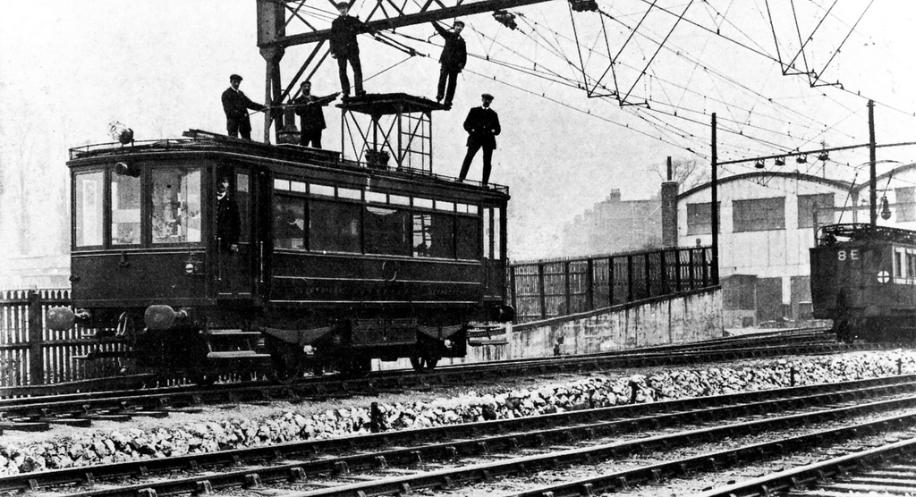
PHOTOGRAPHER UNKNOWN
PECKHAM RYE ELECTRIC DEPOT
The London Bridge end of the carriage depot built at Peckham Rye to house and maintain the South London Lines electric
trains. In the foreground is a petrol driven vehicle purpose-built for the maintenance of the overhead wires.
All L.B.& S.C. carriage stock was formed in numbered sets, the electric units being identified by ‘E' suffixes
THE PIONEERING L.B.S.C.R. MOTORMEN
The Rates of pay for the original grade of Motorman was 25shillings per week compared to 39 shillings per week for
Enginemen for this reason although Enginemen were given the option of becoming Motormen few took up the offer. Instead
most Motormen were retrained Firemen or Guards who were already on a comparable rate of pay.
Dates of the opening of Motorman’s Depots
Peckham Rye Motorman’s Depot 17th January 1909
Selhurst Motorman’s Depot 12th May 1911
Crystal Palace Motorman’s Depot 12th May 1911
Wallington Motorman’s Depot 1st April 1925
Dates of initial Passenger Service AC operation
London Bridge - Victoria 1st December 1909
(via Denmark Hill )
London Bridge-Victoria - Crystal Palace 12th May 1911
(Via Streatham Hill/Tulse Hill including Tulse Hill - Streatham Hill and Crystal Palace - Norwood Junction/Selhurst)
Balham - East Croydon - Coulsdon North/West Croydon - Sutton 1st April 1925
The Line between Streatham-Tulse Hill was AC electrified in 1913 but was never used in passenger service.
Dates of initial Passenger Service DC operation (4th rail system)
East london Line Monday 31st March 1913
(New Cross (Gate) - Shoreditch) worked by the Metropolitan Railway. The Great Eastern Railway continued to operated a
freight inter-change service to New Cross (Gate).
The reports from the Locomotive Journals are about 10 week old when published, I am hoping to marry these events to the
exact dates they happened.
Extracted from
The Locomotive Journal
MARCH 1911
page 113
The electrification of the main-line between London, Brighton and Eastbourne, is, we understand also under consideration.
The statement, however, that electrically propelled trains would be running on the main-line m about three years' time would
appear to be premature. At the recent meeting of shareholders, the Earl of Bessborough stated that the board had naturally
thought of electrification, and were seeking advice upon the possibility of carrying it out, but the conditions of working a
main-line traffic would differ very considerably from those obtaining in a suburban service, so that much consideration would
be necessary before any definite decision could be arrived at. We might add here that the rumoured electrification of the
London, Tilbury and Southend Railway seems to be improbable, in view of the proposed purchase of the line by the Midland
Company.
Extracted and adapted from
A.S.L.E.F. Organising Secretary W. Warwick's report
The Locomotive Journal
MARCH 1912
page 118
I commenced the year by visiting our Battersea Branch secretary (who, I am sorry to say, has had a very severe illness), for
the purpose of making inquiries re a serious accident which happened to one of our members of that branch. On December
(Friday)15th, 1911, he received a severe electric shock whilst travelling on a steam engine under a portion of the electrified
London, Brighton and South Coast Railway, although I am pleased to say our member is now convalescent. I understand no
Board of Trade inquiry is being held.
On Thursday 25th January, I visited Peckham, with a view to opening a branch of our society among the motor-men on the
London, Brighton and South Coast Railway, and finding matters favourable, I made the necessary arrangements.
On Tuesday 30th January, again visited Peckham, for the purpose of declaring the branch open (Peckham Rye branch become
the first Motormen only branch on the L.B.S.C.R.) as mentioned above. I have no doubt this branch will soon embrace the
majority of the motor-men, as they have a lot of leeway to make up in their conditions of service, and the only way they can do
it is by organizing in our Society and thus joining hands with other electric motor-men.
Already, as electric motor-men, they are doing singly what it took two men to do under steam, and for less than half the
amount that was paid the engineman and fireman whom they have superseded. This kind of thing is growing, for the London,
Brighton and South Coast Railway is contemplating further extensions, while at the last half-yearly meeting, the chairman of
the London and South-Western Railway directors told the shareholders he hoped in the near future to be able to announce that
their suburban lines were electrified. This means displacing a large number of enginemen and firemen, as the motor-men take
away the position which rightly belongs to the locomotive-men.
APRIL 1912,
Page 171
I closed my last report with some remarks re the opening of Peckham Branch for motormen, and I now wish to say that this
branch is already justifying its existence, and if the motormen will only band themselves together in this, their own union,
there is every hope that they may in the near future level themselves up to what is paid to their fellow motormen in the London
Tubes. I am pleased to learn that many of the latter realize, that if something is not done in the near future they will have to
come down to the Brighton motormen's conditions, which are, to say the least, far below what they ought to be. I find there is
a ready response by the London Tube motormen to assist their fellows on the London, Brighton and South Coast Railway, and
not only so, but we have it on the best authority that the London and South-Eastern Railway Company is about to electrify its
local service, and the footplate - men on that railway will be well advised to be up and doing in regard to this matter, not
forgetting that to be forewarned is to be forearmed. The London, Brighton and South Coast locomotive-men were to some
extent caught napping when the company opened its electric portion, and that, with the two societies question, so weakened
the men's standing, that after a short skirmish with the general manager for the right of the locomotive-men to fill these
positions, and the question of reasonable wages for the responsibility the work entailed, they had to retire without gaining
anything, consequently there has been dissatisfaction ever since.
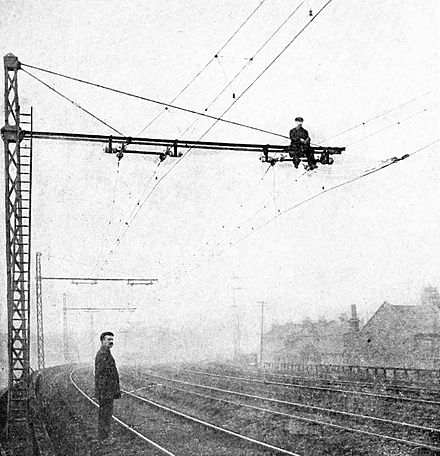
Extracted and adapted from
A.S.L.E.F. Organising Secretary W. Warwick’s report
The Locomotive Journal
JULY 1912
page 317
I also visited our Battersea Branch secretary in connection with matters affecting the London, Brighton and South Coast
Railway locomotive-men, more especially as applicable to their re-election of a new conciliation board.
The following day I visited our Peckham Branch on practically the same business, with just this difference, that our Peckham
Branch consists of motor-men, whom the company is endeavouring to muddle up in a board consisting of all grades
concerned in the working of the electrified portion of the London, Brighton and South Coast Railway. These motor-men
contend that their place is with the footplate-men and are seeking to be grouped with them for purposes of conciliation board
business, and I think footplate-men throughout the country will say they are right and be prepared to uphold them as far as
possible in the matter. However, the general manager seems to think otherwise, and to us, as practical men, the reason is not
far to seek. If I judge the motor-men aright, they are determined to leave no stone unturned in their efforts to be allowed to
join hands with their natural allies—the footplate-men ; it will, possibly, be a question for the Board of Trade to decide, and in
the meantime it should be impressed upon that department, as clearly and forcibly as possible, that motor-men, for the
purpose of dealing with conditions of service, are to all intents and purposes in the same position as the men on our
locomotives, and to attempt to muddle them up with other grades will prove about as easy a task as mixing oil with water.
Most of us know that if you place these ingredients together and stir briskly, they appear to mix, but the moment you leave off
stirring you are convinced the labour has been all in vain. General managers and other officials may think that when they
have issued certain instructions and notices they have succeeded in jumbling up motor-men, or footplate-men, with other
grades, but a greater mistake was never made, because directly hours and wages and conditions of service come to be dealt
with our men rise to the top and demand to be dealt with separate and distinct. It cannot be too clearly pointed out to the
Board of Trade and all concerned, that if they wish the unrest in the railway world to cease, this is one of the things they must
accede to, viz., that motor-men and footplate-men are one and that they must be allowed to deal with all matters affecting
them from a sectional standpoint.
And now let me say—in case some of our friends may read something into this which is not there, or in the mind of the writer
—that the above does not make the slightest difference as far as any agreement which may hereafter be come to in regard to
federation ; in fact that is why we refused to go further than federation, simply because we intend to keep the management of
our own affairs in our own hands.
On Tuesday 7th, May, I visited our Peckham Branch again, in connection with matters mentioned above, but am sorry I
cannot report much progress, because the "powers that be" seem to have made up their minds that motor-men shall be kept
separate and distinct from the footplatemen.
On Friday 24th I attended two meetings of our West Brompton Branch, at which the men were discussing their position re the
conciliation board, the manager having suggested two boards for the whole of the employees, which means the motor-men
being tacked on to four other grades, and thus placing them in the position of the old central board—which the Royal
Commission decided must go. These are District Railway men, and what I have said re the Brighton motormen above, applies
in this case, but we must "wait and see" what the result of the men's application for a sectional board will be.
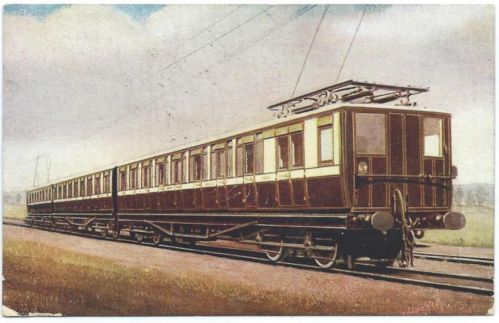
Extracted and adapted from
A.S.L.E.F. Organising Secretary W. Warwick’s report
The Locomotive Journal
AUGUST 1912
page 358
I concluded my last report with some reference to the position of the motor men on the District and London, Brighton and
South Coast Railways, re their position under the new conciliation scheme. In both instances the motormen mentioned above
were to be jumbled up with some of the other grades. I am pleased to be able to report now that the District men have been
able to extricate themselves, and after an appeal to the manager and a vote of the men it has been decided the motormen shall
have a sectional board by and through which they can deal with their hours and wages and conditions of service. With the
London, Brighton and South Coast motor men I am sorry to say it is otherwise, the general manager having so far refused to
listen to their appeal to be grouped with the footplate-men, with the result that the motormen have appeared before the
officials in an application for improved conditions of service, muddled up with passenger guards, signalmen, goods guards,
goods shunters, parcels checkers, ticket collectors, &c. I understand each grade laid their case before the officials, when the
usual stereotyed reply was given, viz., how much the company had already given in improving the conditions of certain
sections, and what the conditions then asked for by the various grades would cost, also the extra cost of coal, cost of
Insurance Bill extra cost of material on account of high price of coal, &c, &c.; and then the deputation was told they would
receive the decision in due course.
Now the position is as follows: If the decision of the "powers that be" is not satisfactory, and the matter goes to conciliation,
the motormen are in the position of not having a representative on that board, and consequently will have to leave their
interests to be looked after by some of the grades mentioned above; and while we are prepared to give the passenger guard,
signalman, ticket collector, &c, credit for being wishful to assist the motormen, yet we must realize that, being unable to enter
into the worries and responsibilities peculiar to that grade, it is practically impossible for them to represent the same: hence,
as mentioned in last Journal, if the officials of the Board of Trade are anxious that the unrest should cease, one of their first
duties is to allow the motormen to be grouped with their own class, the footplate-men.
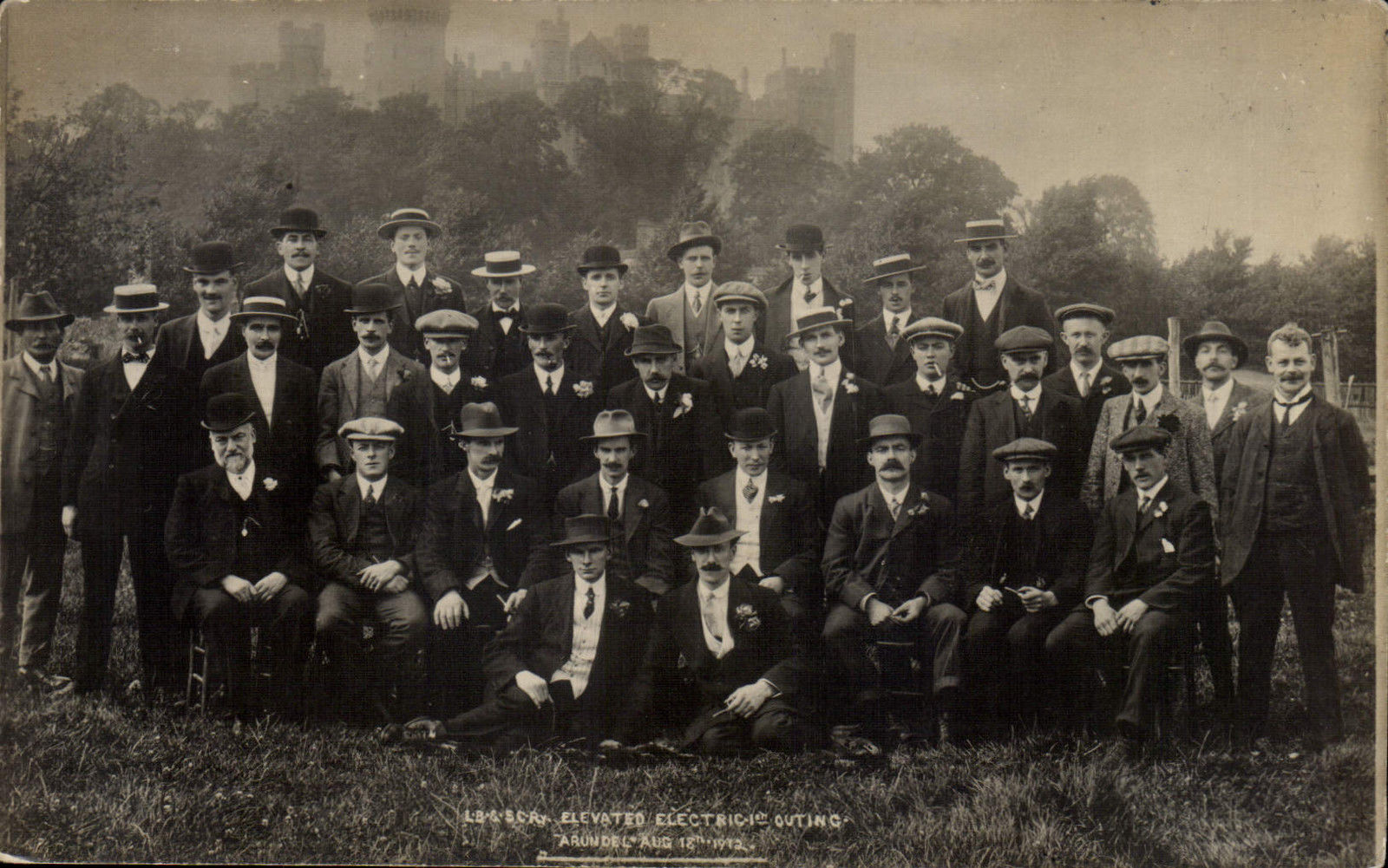
PHOTOGRAPHER UNKNOWN
London Brighton & South Coast Railway Elevated Electric
1st Outing to Arundel on Sunday 18th August 1912.
Extracted and adapted from
A.S.L.E.F. Organising Secretary W. Warwick's report
The Locomotive Journal
SEPTEMBER 1912
page 409
I returned home on the Monday (1st July), and, during the week, visited our Peckham and Westminster Branches on important
business. Peckham Branch is making a heroic attempt to improve the lot of the motor-men on the London, Brighton and South
Coast Railway, which is far below that of any other motor-men in or around London ; but they have an uphill battle, owing
largely to the fact that the company can recruit and train men from the lower-paid grades—these men being willing to devote
the time necessary to learn a motor-man's duties free of charge. The irony of the whole thing is that our men have to instruct
these men, who seem to think that when they have stepped into the position of a motor-man, with all its worries and
responsibilities, at the magnificent salary of 33/- per week, they will have found an " El Dorado." However, it is not finished
yet, and it remains to be seen where all the cheeseparing will ultimately land those concerned. One thing is certain, it is not
doing anything to calm the unrest so much developed, not only by the capitalist, but by the Government itself. These people
must know that it is worse than useless to simply go on deploring the unrest, whilst they know they are doing their utmost to
compel men to work year in and year out for less than a living wage; even where a few sops have been doled out by the
various companies, such as threepence per day to firemen, and a shilling or so per week to cleaners when they reach man’s
estate. If anyone is so ignorant, or innocent, as to think such meagre things are going to calm the unrest they will undoubtedly,
in the near future, receive a rude awakening.
On returning home I was called to Peckham, one of our members having had the misfortune to slightly collide with the stops
at London Bridge whilst in charge of an electric train. I took the matter in hand and gave the necessary advice, reporting to
General Office, so that we may be prepared for any developments in the case. There has been a few already but as the case is
somewhat sub judice I will refrain from dealing further with it in this report, but may have something to say in my next.
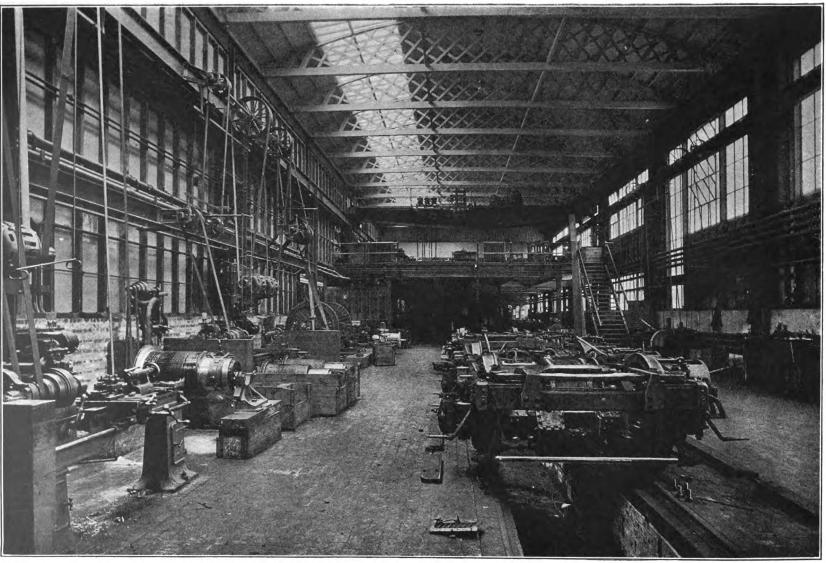
PHOTOGRAPHER UNKNOWN
Inside Peckham Rye Shed
The Locomotive Journal
APRIL 1913
page 186
CORRESPONDENCE.
NOTICE TO CORRESPONDENTS We do not hold ourselves responsible for the opinions expressed by correspondents. We
reserve to ourselves the right to publish or reject any correspondence.Rejected correspondence will not be returned unless
accompanied by a stamped envelope. All correspondence to be written on one side of the paper only, and in every case
accompanied by the name and address of the sender, not necessarily for publication, but as a pledge of good faith.We shall be
glad to receive articles on any subject of general interest.
All articles for publication are to be sent not later than the 17th of each month, and addressed
" Editor of The Locomotive Journal" 8.Park Square. Leeds
All communications to be sent to Mr. A. Fox, General Secretary.
ELECTRIFICATION
SIR,—Probably a great many locomotivemen, and especially on the Brighton Railway, have heard of or read the
announcement by the chairman of directors of the further extension of electrical train working. The result of the experiment
that has been anxiously watched by other railway companies proves, according to the speech of the chairman, an unqualified
success, and that the suburban traffic once lost by the competition of the trams on the roads has been regained. On the South
London line alone 14,000,000 passengers have been brought back to the trains. On the Crystal Palace section 4,000,000
additional passengers have been captured in one year, and on the London and Sydenham route the increase in traffic is
319,000. Well, these figures, or rather results, naturally justify the action the company is taking to extend it. Throughout the
Metropolitan area, and in fact over the whole of the system, no depopulation is taking place. The geographical position of this
railway is without a doubt the best, occupying the silver streak of the sunny south coast, and I anticipate the prospects are still
likely to improve. The traffic receipts showed an increase of 21,000, despite the unfavourable year and the social unrest
existing at the time in the country. But there are two important sentences I wish to dwell a little on : " that the relations
between the employer and employed are amicable" and "asset of industrial peace on the line." In 1906 the writer mentioned to
a large body of locomotive-men what this innovation was likely to lead to—I mean, of course, electrical train working. It was
regarded at that time as merely a drop in the ocean by many—but was informed that we cannot stop the law of progress any
more than we can stop the law of gravity; it is bound to go on. Now my prophecy at that time was perfectly correct, and a
feeling of disquietude prevails in the locomotive ranks at the present time, and it is obvious and bound to manifest itself. Its
effect on steam working and promotion will be sadly felt, the financial conditions will not bear comparison, and the one-man
principle of manipulation naturally means a reduction in the number of hands required. The chairman omitted, when speaking
of the 26,000 increase in wages and the 4,567 contribution of the Insurance Act, to mention the economy that had taken place,
which in quarters was a little unwise; and this railway, with all the manifestation of conditions, is in some cases financially
inferior to other lines. I appreciate, or rather offer congratulations, that conciliation boards were not necessary this year; in
fact my previous articles have rather condemned them, and it is a " great asset" if mutual co-operation will only continue on
lines satisfactory to both. This does not depend, of course, entirely on the men—wise diplomacy is required on both sides to
bring this about.
Naturally the directors, officials and shareholders are jubilant at the glowing results of electrification, and the optimistic view
they take of the future, but it is narrowing down the scope of promotion for the rising generation, which has always been bad
on this line , and the allusion to the ensurement of punctuality in the congested Metropolitan area needs efficiency in
everything to be brought about But will the desire be attained ? The sandwiching of trains and close margins in many cases
point at times to its non-fulfilment. If efficiency is expected in one quarter it must exist in another There is not a grade or a
section of railwaymen who have to do their duty to the best of their ability more than the locomotive-men and it is only right
and justifiable they should receive fair consideration We frequently notice when half-yearly meetings take place the chairman
of directors, the general manager and the superintendent of the line receiving eulogiums in the press, but no mention of the
locomotive superintendent and the officials downwards for the part they have played in connection with the successful
working, many people forgetting such a thing as an engine builder or an engine-driver, and it is only when a slight mishap
occurs in the shape of delay that they discover mechanism and brains are essential to land them at their destination This is
one of the evils society groans over—delay, and society really has little or no conception it is the premier part of the success in
railway working I write from experience of railway working, and the men exercise every endeavour to work the trams to give
punctuality to a desirous public if the conditions are capable of its fulfilment. Some time ago a passenger in a tram was
commenting on the social unrest prevailing in the country, and remarked to Mr. Will Crooks, M P for Woolwich, that he would
not trust anybody Mr Crooks instantly remarked, " What about the engine-driver "" The passenger was instantly foiled The
engine-driver was at the time his guardian, and probably it had never occurred to him before that the safety of his person
rested with the engine driver. The engine-driver and fireman have to bear the brunt of the heat, the cold, and the wet, and to
live at times under conditions of semi-starvation for the want of time to have a meal, and all this endured in many cases in a
quiet, unassuming, unostentatious manner , but only let it become publicly known that one single individual had kicked over
the traces and public indignation arises Really I suppose it is a phase of human nature, reminding me of a captain of a coal
vessel when the propeller broke and drifted in the open sea for three days and nights amid the direst want for food, and after
landing safely "got the sack" for the delay in reaching the shore I will not say it is an exact replica that locomotive-men
endure, but it's next door to it Business men of all sorts, we are aware, want punctuality Drivers also have to realize its
importance equally so, and strain every muscle to accomplish i t , but it cannot be accomplished unless his requirements are
efficiently acceded to by those in authority Engine drivers now in many cases are more intelligent than their predecessors
Many not only drive an engine, but also read, think, talk and write, and possess a more distinct feeling of self discipline, and
know subordination is necessary and accept it, but not so if undeserved; and naturally their increased intelligence would, and
does at times, resent it. We want inquiry and discussion. The locomotive-men need to be heard and understood as much as any
other grade or section ; I might, in fact, add a little more so. Their opinions and views should be consulted, which would be a
great factor in preventing discontent. Things will not adjust themselves if left alone, and it is not satisfactory to muddle
through our work. If punctuality is expected to be observed the instrument we perform on must be properly tuned, or the notes
are bound to be faulty, and to keep time under such conditions cannot be achieved. We are born to labour, labour should be
part of everyone's life, but all like pleasant labour it is really the whole solution of the industrial difficulty to feel and know
success follows a man's labour. And locomotive-men are gradually and surely rising to a higher pitch of intelligence. Fully
knowing the responsible positions they occupy justifies more prominence being given to them, and if wise counsels are carried
out between the masters and the men I anticipate they will result favourable to both.
PECKSNIFF
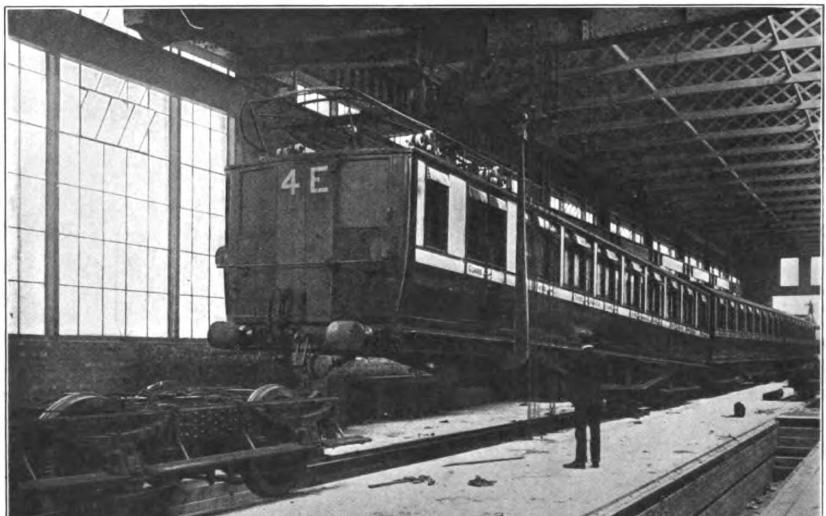
PHOTOGRAPHER UNKNOWN
Inside Peckham Rye Shed
LOCOMOTIVE JOURNAL
SEPTEMBER 1913
Extracted from the New Cross Branch report.
page 271
An open meeting of the above branch was held on Sunday, April 27th, when electric train driving, that all important question
to locomotive-men, was dealt with. The correspondence up to date was read, while a report of the interviews which havve
taken place was given by our delegate, Brother G. Pullen. There was a large amount of correspondence, which took one hour
and a quarter to read. One or two members of the N.U.R. “Never United Railwaymen" is, I know, the wrong interpretation of
those letters, but personally I don't think it is were present, and by the questions they asked the delegate, it was plainly seen
that they were there to stir up party feeling, which I am pleased to say has never been entertained in this branch on this
subject, that is: " Electrification as it affects Locomotive-men." One question from a N.U.R. man was to ask whom the
deputation consisted of, and the reply he got was: " That it consisted of men capable of looking after his interests," which' he
could not deny, and after a receiving such truthful and honest replies as that, these few who are in the wrong society soon
appeared to get a bit more Tight-minded in the way of thinking. There were a few young firemen in the room, some of whom
asked for proposal forms. I am pleased to say that we have been asked for a good number of these forms already this year,
which goes to show that we are once again looking upwards. At present I don't think there is any other system where this
electrification affects the locomotive-men the same as it does at New Cross. I say at present, because I am convinced that a
few years hence it will become more generally adopted. I trust that the men on other lines will take the advice Brother J.
Membery gave when he paid us a visit from West Brompton a short time ago. It was to the effect that the front of those “trains
should be the place of a locomotiveman, and that we were fools if we stood by, with our guns loaded and afraid to fire, and see
those men, whom they want us to call brothers, take the job away from us, thus depriving us of our living. But after hearing
from our delegate the strenuous efforts the deputation is making on our behalf, the locomotive-men here have unanimously
decided to support any action-its members choose to take. I hope the locomotive-men of the country will soon realize that they
must mind their own business and trust their affairs in the hands of men capable of looking after their interests.
ASSISTANT SECRETARY.
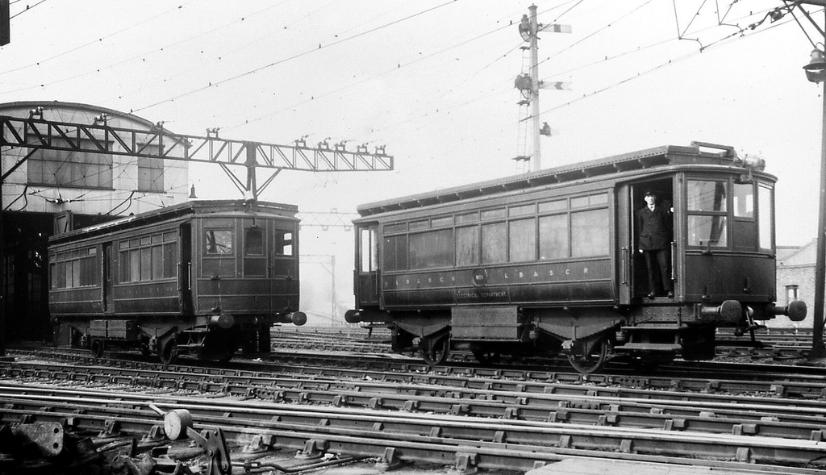
PHOTOGRAPHER UNKNOWN
Peckham Rye Depot
LOCOMOTIVE JOURNAL
JULY 1913
Extracted from the Nine Elms Branch report.
page 330
Brother Harrison, a visitor from the Battersea Branch, then asked permission to briefly address the meeting, and his address
was very enlightening, and I may say almost of vital interest to our members in view of the impending electrification of our
own system. He told us that traffic men upon the London, Brighton and South Coast Railway were applying for and obtaining
the post of motormen, and, furthermore, some were members of the N.U.R. and were actually learning the duties in their own
time at no cost to the company. This certainly, to say the least does not sound like trade unionism, and in view of the fact that
through this electrification a considerable number of their enginemen have been reduced 2 / - per day, and that the firemen are
doing such a long period before they have any chance of promotion; surely the front end of the train is their birthright. It
certainly should be a lesson to us to prepare for the future, and this can only be done by ourselves in our own Society.
BRANCH SECRETARY
PHOTOGRAPHER UNKNOWN
First AC train of CW stock at Carshalton Beeches April 1925
ENGINE AND MEN
page 218
On Friday, July 14th of 1913, Mr. Moore and Mr. W. Hudson, M.P., interviewed Lord Bessborough, Chairman of Directors,
and the General Manager of the L.B. & S.C. Railway, to demand the front end of the trains on the newly electrified system for
locomotivemen exclusively. The men made a firm stand in support of the deputation named, and Lord Bessborough signed the
agreement which gave to locomotivemen the exclusive option on the electric motorman's position. The company sought to get
six men from the traffic department, who had been trained, accepted for the positions, but the delegates refused to do that. The
position carried the steam drivers' rate of wages, and the agreement thus secured formed a precedent, followed later by the L.
& N.W. and other electrified lines.
LOCOMOTIVE JOURNAL
SEPTEMBER 1913
Extracted from the Battersea Branch report.
page 425
An open meeting was held at the Battersea Town Hall on July 27th, and was largely attended. Mr. Arborne was in the chair,
and speeches were delivered by Messrs. A. E. Harrison and J. Cordrey (Battersea), J. Enves (Brighton), G. R. Pullen (New
Cross), A. Marshall (Eastbourne), R. Atkinson (Neasden), and R. Spice (Peckham). This meeting was called to protest against
the London, Brighton and South Coast Railway officials promoting other than locomotive drivers or firemen to motormen. Mr.
A. E. Harrison explained that two from the traffic department were now acting as motormen who were not twenty-one years
old, and were standing senior to men who had been in the company's employ over fifteen years, and that out of fifty-two
vacancies only eighteen had been filled by locomotive-men, and this had a serious effect on locomotive-men. Some drivers
were being reduced to firemen, and in consequence they suffered a reduction of 2s. per day. This required consideration and a
determination to prevent any further reductions when the extension now being proceeded with was completed. He also
explained that most of these men were members of a trade union, and had so far departed from the principle of trade unionism
as to learn motor-driving in their own time. Letters were read that had passed between our Head Office and Mr. Williams,
general secretary of the N.U.R., and surprise was expressed that the actions of trade unionists in learning motoring in their
own time, free of expense to the company, were not repudiated. Brother J. Cordrey, in his remarks, asked all present, if they
did not know any particular part of the road, was it likely that they would be prepared to ride on the engine in their own time
? He maintained it was the same thing. He likewise stated these men were stealing from us the front end of the train, which
was ours by right. The other speakers enlightened those present of the grave position which might be caused by these traffic
men continuing to be employed as motormen. Mr. J. Cordrey then moved the following resolution, which was seconded by Mr.
R. Atkinson, and carried unanimously:—" Seeing by the half-yearly report of the honourable board of directors to the
shareholders that the electric traction is to be extended very considerably in the near future, and taking into consideration the
serious results likely to accrue to the enginemen, owing to the electric traction taking the place of steam power and
subsequent displacement of locomotivemen, the men are of the opinion that in every vacancy occurring on the electric system
it should be filled by a footplateman; and to allow this being put into practical operation, we suggest that any vacancy as
motormen occurring on the electric system an approved driver be allowed to fill the position; and should the electrification be
the means of displacing any senior men, they should be given work on the electric system at the maximum electric rate. This
suggestion we consider would not in any way deplete the locomotive staff, as it would only be filling up vacancies from the
men displaced. This would also make sure of the company always having a competent staff to deal with the electrification,
who could at any time or for any reason be transferred to the electric system or vice versa." Questions were asked and
answered satisfactorily. Among those present were some of the traffic motormen and leading members of the N.U.R. Battersea
Branch. I was pleased to see that they thought the resolution a just one, as they did not oppose it or ask questions against it. A
similar thing might occur when other companies' lines are electrified, and my advice to the locomotive-men is : Beware lest
you have your job stolen from you with your eyes wide open by your so-called brothers in unity. The motto is : Join your own
Society, otherwise your outlook for having charge of the front end of the train is endangered. Remember the electric fever is
on all railways, and ere long good bye to our locomotives. So wake up is the advice of
ONE OF THE BOYS
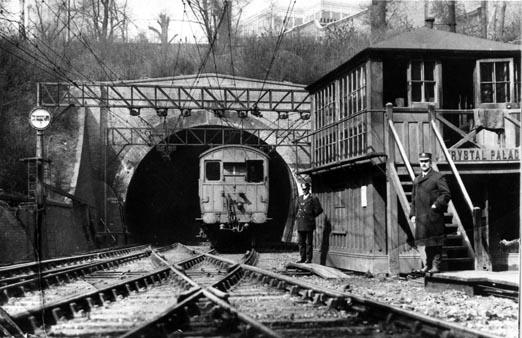
PHOTOGRAPHER UNKNOWN
Extracted and adapted from
A.S.L.E.F. Organising Secretary W. Warwick's report
LOCOMOTIVE JOURNAL
OCTOBER 1913
page 467
The Battersea matter was an open meeting re the electrification, which it was necessary to hold so that every locomotive-man
might have an opportunity of knowing exactly how matters stood, what was being done, and how far the matter had been
carried by the delegates That word electrification is getting burnt into me I have used it so often m the last few months that it’s
getting quite commonplace in my reports and letters, and if I am not able to drop it to some extent soon I am afraid our
readers will begin to think I've got it on the brain " so to speak The difficulty is that probably thousands of our readers find it
somewhat difficult to fully realize the absolute necessity there is for sticking to this matter just now, and the far reaching
effects it is likely to have in the near future, not only on the London, Brighton and South Coast Railway locomotive men, but
on large numbers of the locomotivemen of practically every company in the kingdom more especially on the large numbers of
men stationed in and around London To begin with, there are rumours of extensions on practically all the present electric
railways, then several of the trunk lines having termini in London are discussing the electrification seriously at their half-
yearly meetings I find the chairman of the London and South Western Railway told the shareholders some time ago that the
question of the development of the suburban traffic would be taken seriously in hand and he hoped at no distant date the
board would be able to tell them what their policy would be in the direction of electrification. It was only a question of careful
consideration so as to get the best system.
Then the London and North-Western Railway has built a new line—Broad Street to Watford—which I understand is to be
worked by electricity, and will no doubt displace numbers of locomotive-men at both the London and Watford ends. Also, the
Midland Railway is bound by its agreement in taking over the London, Tilbury and Southend Railway to electrify within seven
years. That does not necessarily mean that it will be sevea years before it comes about. It may come about in the next twelve
months ; it's only a question of will it pay ? Once convinced of that and there is no hesitation in scrapping men or machinery.
As some one said a little while ago, "we do not hesitate to scrap machinery five years old"; but the worker in his wisdom is
content to live under laws three hundred years old. Bearing in mind the above it looks as though the word electrification is
likely to be with us more in the near future than it has been in the past. When I said its use had begun to weary me of late I
referred to the worry and unpleasantness which has been going on for some time in the efforts put forth by the London,
Brighton and South Coast railwaymen to secure these positions. However, the matter has now reached a climax, and is in the
hands of our Executive Committee, and I hope in my next report to be able to inform our readers that for locomotivemen this
important question has been settled once for all, because if the London, Brighton and South Coast railwaymen are successful
it will mean that the matter is practically settled for other companies' men, when and wherever electrification comes about.
The delegates fully realized this at the Conference in May last, hence the resolution.
On Sunday I was at Brighton attending what proved to be a momentous delegate meeting of London, Brighton and South
Coast railwaymen, in as much as it was there decided to hand the question of the locomotive-men’s claim to the front end of
the train over to our Executive Committee, which met in London on the following Sunday, to deal with the matter. However
this body was unable to deal fully with it, as those in authority on that particular railway were scattered over the known
world, and could not be got together under a certain time this time was fixed, and before this appears in print a momentous
question for locomotive-men will be peaceably settled in their favour.
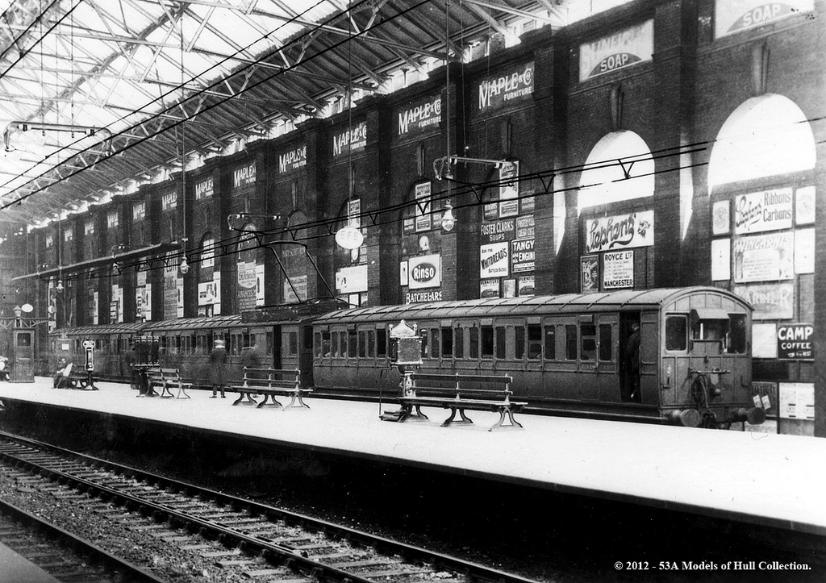
PHOTOGRAPHER UNKNOWN
London Victoria station
LOCOMOTIVE JOURNAL
SEPTEMBER 1913
CORRESPONDENCE
page 435
NOTICE TO CORRESPONDENTS We do not hold ourselves responsible for the opinions expressed by correspondents. We
reserve to ourselves the right to publish or reject any correspondence.Rejected correspondence will not be returned unless
accompanied by a stamped envelope.All correspondence to be written on one side of the paper only, and in every case
accompanied by the name and address of the sender, not necessarily for publication, but as a pledge of good faith. We shall be
glad to receive articles on any subject of general interest.
All articles for publication are to be sent not later than the 17th of each month, and addressed
“ Editor of The Locomotive Journal" 8. Park Square. Leeds
All communications to be sent to Mr. A. Fox, General Secretary.
SIR,—Ten years ago locomotive-men could, and did, in their minds rely on the profession as a security of tenure barring
physical deficiencies or accidental consequences. But what is the position to-day ? Electrification has, and will in the future,
upset very considerably the locomotive-men's profession financially, and also for promotion. The question, which is an all-
important one, is: Do the locomotive-men as a whole realize its probable effect in its true light ? For every single electric
train one man is displaced, which practically means fifty per cent, reduction of the labour in our profession. The solemnity of
what confronts us to-day is of mighty import to us all. The congested traffic in the metropolis and in many of the large towns
no doubt requires means of quick transit, and if wealth can be obtained by any conceivable shape of improvement it is only
natural it will be resorted to to swell dividends. It is no good trying to disguise the fact: electrification has come to stay.
Several railways have notified their intention of adopting it in congested districts, and we have not the slightest doubt it will
be pushed on at all speed. The Brighton Railway is pushing on rapidly to accomplish the extension notified some time ago,
and disquieting rumours area float as to its ultimate effect on the locomotive-men on that system. Efforts have been made for
locomotive-men, and rightly so, to fill the positions on these electric trains, but it appears there is a "rift in the lute," and at
the time of writing things look far from rosy. An important resolution was passed at the conference at Leeds, which embodies
and embraces the support of all locomotive-men on all railways on this point, " that the locomotive-men be employed to fill
these positions." It is sincerely hoped that the companies will adopt this system without friction, for if they look at the financial
side by the fifty per cent, saving in labour, and the decreased standardization in pay, there is nothing to warrant the obstinacy
in standing out. The Brighton Railway is a very prosperous one. From Hastings to Portsmouth it possesses a number of good
watering places well patronized, and this summer a record number of visitors have been at all places, and there is no possible
sign of diminution. The places are populating more and more, and as regards health, this coast is one of the healthiest in the
world. Well, if predictions are to be fulfilled, harmony must exist between the two. For some considerable time, I am given to
understand, many have left the service. What was once the model railway for uniformity and cleanliness is gradually
becoming the dirtiest. Complaints are loud in dissatisfaction of being incessantly on the go, and the apathy and indifference
on the part of some of the rising generation make one think why this undisciplined state Of things that so sorely needs
remedying.What are the reasons ? What are the causes ? I can give a few. There are many occupations now where the pay and
conditions are better than the footplate, minus the dirt, grease and irregularity ; and if the men are not studied in some form
or respect, we cannot expect good breeding or that the juveniles can be tempted to enter a profession bordering on a
downward trend. The companies have a strong disposition nowadays to draw on the uncultured, the illiterate, the yokel, for
cheap labour, regardless of its future consequences. The vile abuse of some drawn from the slums of the Metropolis who have
never meant to stay is occasionally the thing the elders have to contend with. This is a fact of intense interest, and we can
scarcely wonder that we should deduce from it an impression that it implies something defective in a system which ought to be
one of the best by virtue of its importance and responsibility to those who have risen by experience and who know so well
what the elements are for the good of the common weal. To revert back to the original subject, the companies would be wise to
draw all locomotive-men for electrical train working. If they do not, an absolute disorganized profession will ultimately
ensue; young men of superior breeding will not join our department without something to aspire to, or some ultimate reward
for their labours, and enginemen must, not only for themselves but for the community as well, be energetic in upholding a
profession which has been held too cheap for the want of harmony, and aid to lead it on to progress.When the electrical
working was first installed locomotive-men generally were indifferent as to its probable effect on their future position, but of
late this is being dispelled; men are strongly pulling themselves together, and beginning to realize its gravity. They know
promotion will degenerate, and what does degeneracy mean ? That the junior hands get slack, lose confidence, and have an
utter disregard for the keen interest once displayed by clean footplate fronts, and a zealous feeling pervading to get on. This
now is conspicuously absent, and brought about by excessive "go" at all points during the day. In any instances men have no
conception only day by day what the duties are, with no systematic way of entirely claiming your own engine to work with. It
aggravates and accentuates the men to know they have to muddle through the work the best way they can, and often under
difficult circumstances. Locomotivemen at the present time need more study and devotion meted out to them. The time has
arrived when all engine requirements should be efficiently performed in the running shed ; the men's time now is entirely taken
up on the road, without having to do work after arriving home or before starting. Years ago the men had time during the day
for proper engine requirements and food ; it is not so now, and this is one of the causes of the discontent so largely prevalent
to-day. This long absence of meals and irregularity is keenly felt by the men, for human nature is bound to be undermined and
give way under this pressure sooner or later. Locomotive-men have come to a phase in their affairs when it is absolutely
necessary to rub shoulders together. It is useless to discuss and complain loudly in groups of twos and threes. They must
deliberate in an organized form if any real good is to be done. The time has come when men must come forward as men if they
are desirous of ameliorating the unsatisfactory position we are at present in. All locomotive-men with truth must admit the
speeding-up in locomotives these last few years; that things were not as now, that evolution is bound to cause changes, and
electrification is one manifestation of it. We have also experienced that on economical grounds locomotive-men have been
"done down." Every gap whereby our services could be utilized has been filled up, and without thought of any increased strain
the men have to endure. Already signs are ahead, discussion is taking place in trying to diagnose the multiplicity of ills flesh is
heir to, and the constitution will have to look seriously to the position of responsibility if the lives and health of the nation are
such a great asset. But it would be more to our credit, more to our honour, if locomotive-men could achieve success by their
own efforts, and to be able to say at the end, we have elevated our position, by a harmonious combination, better than we
found it.
PECKSNIFF.
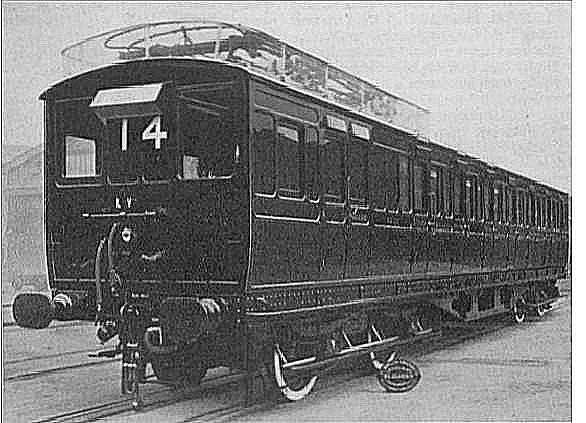
Photograph: Metropolitan Carriage & Wagon Co Ltd
Motor coach built for the LBSCR for their overhead electrification to Crystal Palace in 1911 - 12
Extracted and adapted from
A.S.L.E.F. Organising Secretary W. Warwick's report
LOCOMOTIVE JOURNAL
NOVEMBER 1913
page 511
I closed my last report with a prophecy that has not been literally fulfilled, which shows how risky it is to assume the role of
the prophet. However, I believe it is all a matter of time. In writing of the electric question on the London, Brighton and South
Coast Railway, and the locomotivemen’s claim to the front end, I assumed the directors, who, as then stated, were on their
holidays, would have been back and dealing with the question in the six weeks which had to elapse before the issue of last
Journal, but it has not turned out just that way. At the time of writing they are arranging to meet the men’s deputation to again
consider the question. As I have before pointed out, it is an important question not only for the London, Brighton and South
Coast Railway locomotive-men, but for all locomotive-men. I believe other companies’ men realize" this and are looking to
this settlement as a deciding factor for all.
PHOTOGRAPHER UNKNOWN
AC service of SL unit at original South Bermondsey, on a London Bridge to Victoria
Elevated Electric working March 1928
Extracted and adapted from
A.S.L.E.F. Organising Secretary W. Warwick's report
LOCOMOTIVE JOURNAL
DECEMBER 1913
page 557
From Portsmouth I travelled home, via London Bridge, with the hope of meeting Mr Moore, assistant secretary, who had an
appointment that day with the directors and general manager of the London, Brighton and South Coast Railway re the still
vexed question of electrification and the claim of locomotive-men to the same Mr Moore, however, had got upstairs before I
arrived, and so I had to visit him in the evening to know the result The following day I visited Peckham for a few particulars re
a slight collision that had occurred at London Bridge, and the next day I spent with the London, Brighton and South Coast
delegation, which was meeting the directors for their decision in the above-mentioned matter I am sorry they again refused to
grant the reasonable claim of the locomotive-men to the front end of the train exclusively and so the matter still remains
unsettled, awaiting the further decision of the men.
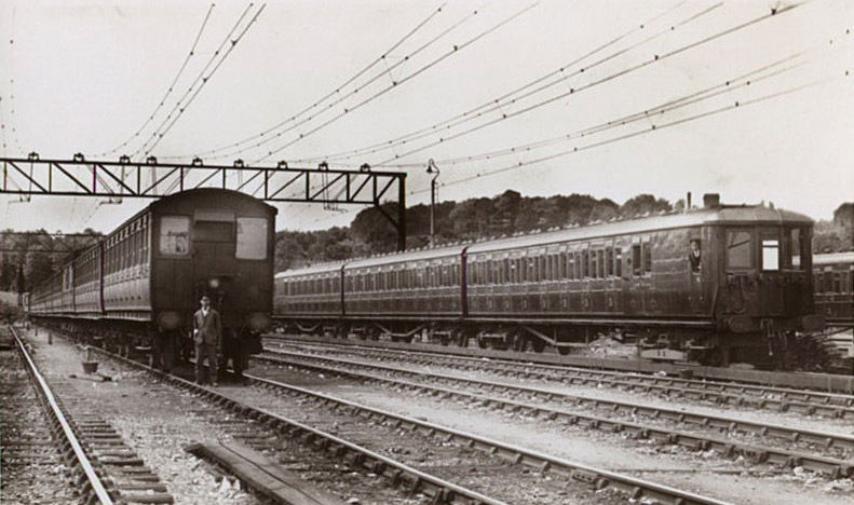
PHOTOGRAPHER UNKNOWN
Coulsdon North Carriage Sidings c1929
The Southern Railway transferring from AC multiple units to DC multiple units
in September 1929
MONOPOLY ON THE 'MOTORMEN'
With further electrification, the Locomotive Department was overwhelmed by loco-men applying to become motormen, small
wonder because of the relative comfort, cleaniness and reduction of the physical workload driving the new electric services. A
deputation of A.S.L.E.F. representatives from the Company led by drivers Jack Enves (Brighton), G.R. Pullen (New Cross),
fireman Albert Harrison (Battersea) and Motorman Spice (Peckham Rye), met with Locomotive Superintendent Lawson
Billinton and the deputation was told that their demand for exclusive right to appointment as motormen could not be granted.
In July 1914 there was further pressure from the National Union of Railwaymen (N.U.R. (formerly the A.S.R.S.) demanding
their men having a monopoly of appointment to the position of electric train motormen, and on the 16th October 1914 a
deputation accompanied by by the Assistant Secretary of the N.U.R. and the Acting Secretary of A.S.L.E.F. met with Billinton
regarding this issue.
Extracted from the book
Lawson Billinton: A Career Cut Short
By Klaus Marx
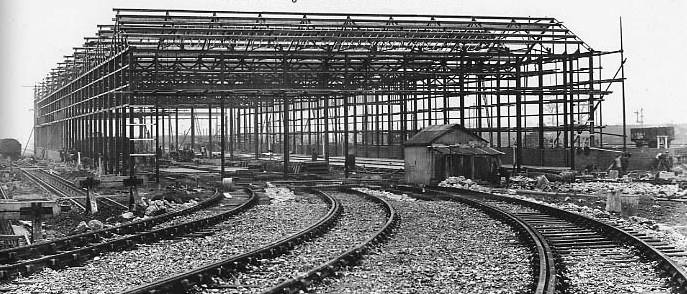
PHOTOGRAPHER UNKNOWN
With the expansion of Electric Multiple Units serving the suburbs of London, a new Maintenance shed was constructed
between Selhurst and Norwood Junction, above is a view of the A.C. Maintenance Shed constructed.
|
On February 1st 1919 the 8 hour day was finally implemented for Enginemen throughout the Country although the Board of Trade reinterpreted the agreement to exclude meal times for Motormen. The Motormen employed on the London Brighton and South Coast Railway and the London and South Western Railway and on London Underground were expected to work the full 8 hours without a meal break. On Sunday February 2nd, A.S.L.E.F. Motormen on the London Brighton and South Coast Railway went on Strike along with Motormen on London Underground, with the threat of the rest 42,000 members to join the strike to force this principle. The A.S.L.E.F. Executive met on Monday 3rd February and sanctioned the action and called out all the Engine men on the London Brighton and South Coast Railway as well as all Motormen on the District Railway and the London and South Western Railway.
|
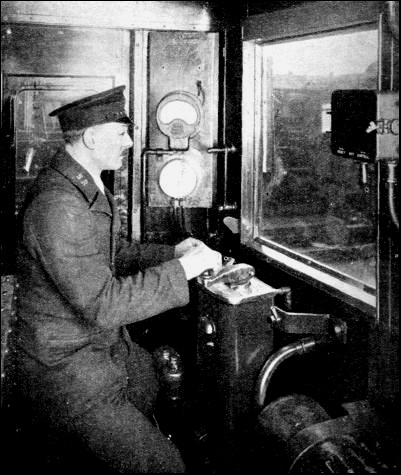 PHOTOGRAPHER UNKNOWN |
On Friday 7th February the Railway companies capitulated and an agreement with A.S.L.E.F. was reached where meal breaks
would be provided for Motormen.
In spite of the settlement the drivers and firemen belonging to the Associated Society had not returned to work, this was
owning to the decision had only been reached at such a late hour on Thursday night, and there had not been time for it to be
officially communicated to the members. By the Saturday a near normal steam was being operated, but owing to the absence
of motormen, only a curtailed service of electric trains was in operation.
The Drivers and firemen who belonged to the National Union Railway-men continued to work normally during this dispute.
PHOTOGRAPHER UNKNOWN
UNIFORMS FOR ENGINEMEN & MOTORMEN
Uniforms or overalls were not issued to Enginemen up to at least 1904, if not later, then only an overcoat every 2 years.
A.S.L.E.F. managed to get an agreement with the L.S.W.R. in 1912 that when the grade of Motorman on that company was
introduced with electrification, which happened in 1915. These positions would be filled exclusively by Enginemen it states
that
"This was granted and upon pressure being exerted by our Society, other lines followed suit at a later date"
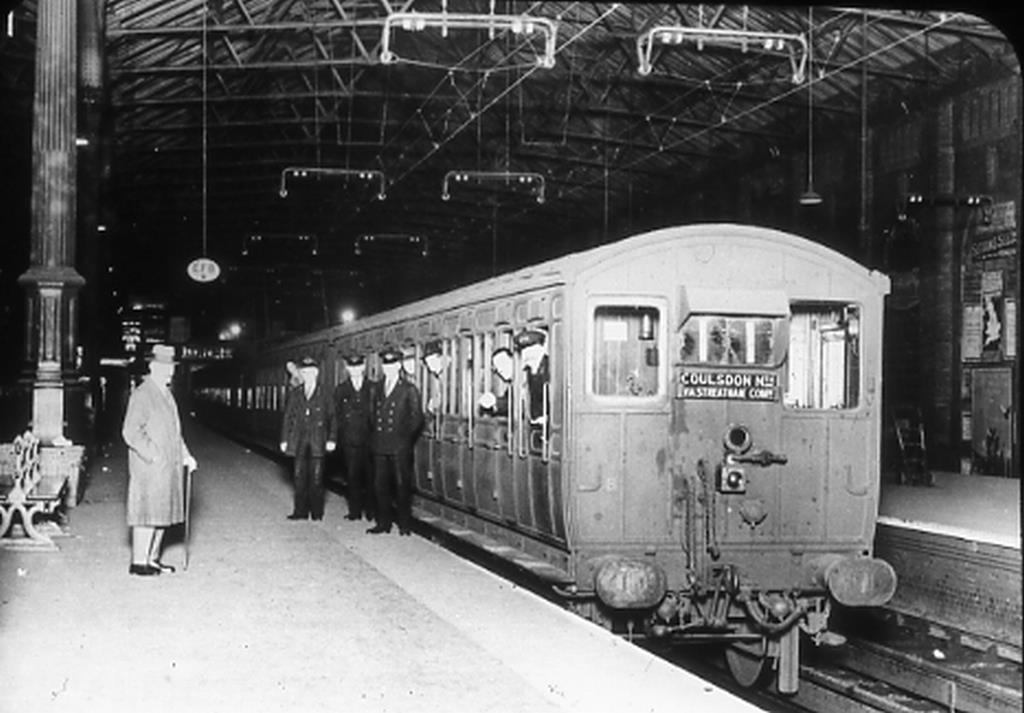
* note the DC third rail
During 1925-1929 the Southern Railway carried out an extensive programme of signalling conversion in the inner London
zone and installed during that period a complete power signal system, entirely of Westinghouse manufacture, at Charing
Cross, Cannon Street, Borough Market Junction, London Bridge and New Cross, and on the tracks linking up these stations.
This power system covers about 47 1/2 track miles, carrying an extremely intense suburban traffic in addition to heavy coastal
services of both passenger and goods trains.
With the extension of the Electric Service to Brighton and the result and greatly increased train service, complete
reorganisation of the signalling arrangements became a necessity. The valuable experience gained on the London power
signalling showed that a similar system, modified to comply with the characteristics of the Brighton Line, would give the
required facilities, and in making the decision to introduce power signalling between Coulsdon and Brighton the Railway
Company have added a further 119 track miles of line which are provided throughout with colour light signals and continuous
track circuits. As the electrification of the London to Brighton line constitutes the longest section of electrified railway in
Great Britain, so the signalling comprises the greatest length of continuous track circuiting and complete power signalling on
a British main line. Westinghouse apparatus was again selected as possessing that essential reliability necessary to withstand
the severe operating conditions on the 36 miles of route, and advantage was taken of several new developments and
improvements to apparatus, although, in general, the design of apparatus called for follows closely upon that which has
proved equal to all the demands made on it during the previous four years.
The map and key plan below shows the line between London and Brighton, and it will be seen that East Croydon is the
Junction for all trains to and from the various London termini. The power signalling commences at Coulsdon North about 14
miles south from Victoria and continues through Earlswood Junction to Three Bridges. Three Bridges is the junction for the
Horsham and Portsmouth line to the south-west, and for the East Grinstead and Tunbridge Wells line to the east ; in addition,
it is of importance owing to the presence of extensive goods sidings, locomotive running sheds, and the main control station
for the remote control of all traction sub-stations on the Brighton line. There are four running roads between Earlswood and
Balcombe Tunnel, which is about 2.5 miles south of Three Bridges, the signal cabin situated at the north end of the tunnel
having the control of the junction from the four to two roads. The line diverges into four roads again between Copyhold
Junction and Haywards Heath Station, then reverts to double-road track, continuing thus to Preston Park. A branch line
junction at Copyhold is controlled from Haywards Heath Cabin, about miles distant, crossovers being provided for the routing
of trains for running into the required platforms at Haywards Heath. Plans of the track and signal layout at Three Bridges,
Copyhold Junction and Haywards Heath, will be found at the end of this publication.
A short distance south of Haywards Heath is Keymer Junction, where the line to Lewes and Eastbourne diverges. Preston
Park is on the outskirts of Brighton, the cabin having control of all traffic to and from London, and it is here that trains
running direct between London and Worthing are diverted. Brighton Station lies about 1/2 mile south of Preston Park Station
and besides being the terminal station of 10 platforms for London to Brighton traffic, it is also a terminal and junction for the
Hastings line to the East and the Worthing and Portsmouth line to the West (the line joining that from Preston Park at Hove).
There are extensive goods marshalling sidings at Brighton as well as locomotive running sheds, locomotive and carriage
repair shops, large carriage sheds and washing plant for electric stock.
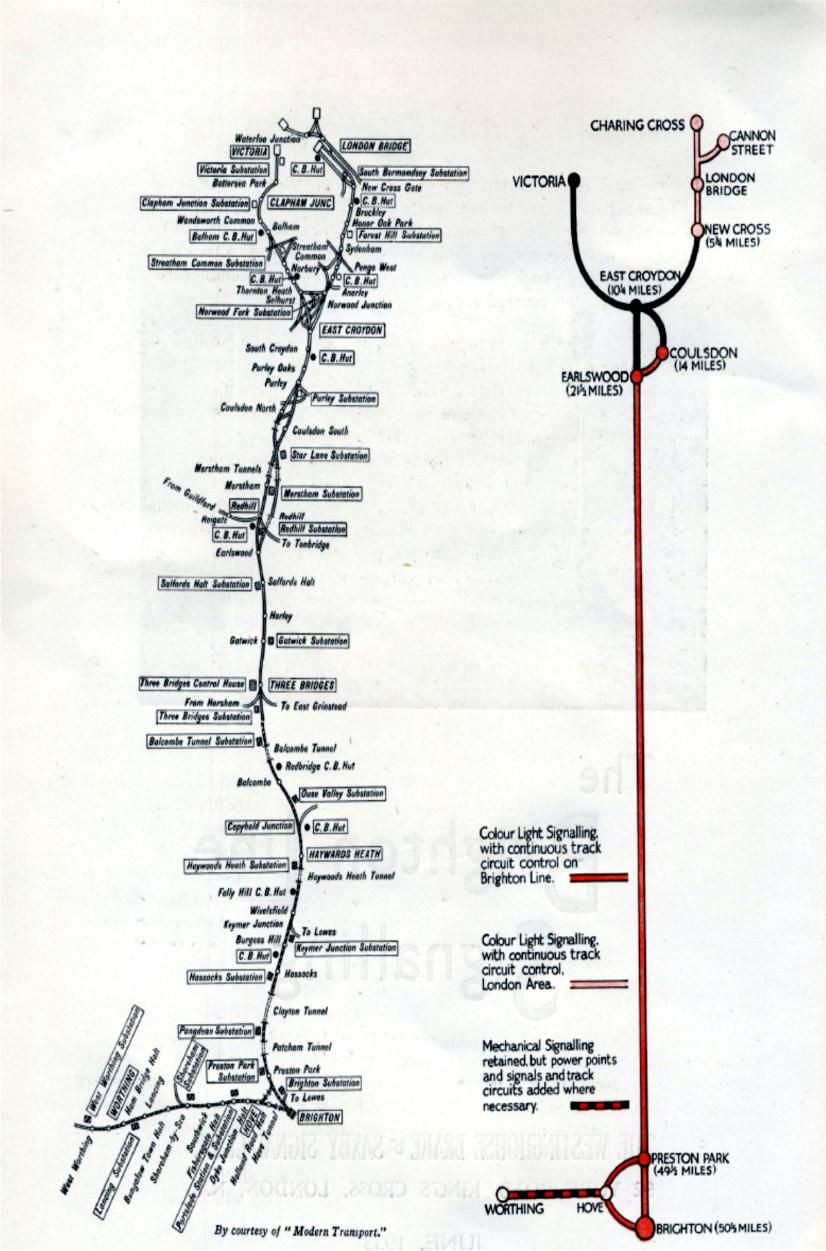
PHOTOGRAPHER UNKNOWN
The general signalling scheme employed three-aspect colour light signals throughout for running signals and two-aspect colour light signals for shunt movements. Exceptions to the general rule are to be found in cases where it has not been possible to obtain full braking distance, and here four-aspects were used to maintain the necessary flow of traffic. With a single exception all other types of signals, such as call-on and warning signals were eliminated, thus adding greatly to the uniformity and simplicity of the system without interfering in any way with expeditious handling of traffic.
The system of control adopted between Coulsdon and Preston Park, a distance of approximately 31 miles, is electro-mechanical with continuous track circuiting of all running roads, and track circuit fouling protection of junctions and sidings. At Brighton the system is all-electric, controlled from a new cabin containing a 225-lever power frame. In the electro-mechanical section certain cabins were selected for retention in service and all others have been abolished. The selected cabins are those from which the routing of trains is always being carried out, or where there is at times some shunting of goods trains, or where special regulation of traffic may occasionally be necessary. The above diagram makes it clear the number of cabins totally abolished, those which are normally switched out, and those, such as Earlswood, Three Bridges, Haywards Heath, Keymer Crossing and Preston Park, which are always in service.
DUAL LINK DRIVERS TO MOTORMAN DEPOTS
Steam drivers had the option to become Dual Link drivers. These drivers would then would fill the vacancies at their
neighbouring Motorman’s depot. The motormen’s work would be coved by Dual Link drivers when turns were uncovered as
there was no spare coverage built to their rosters to cover leave, sickness or additional work.
Brighton Loco Dual Link Drivers would transfer to either Brighton or West Worthing Motorman’s depots.
Newhaven Loco Dual Link Drivers would transfer to Seaford Motorman’s depot.
Eastbourne Loco Dual Link Drivers would transfer to Eastbourne Motorman’s depot.
St. Leonards Loco Dual Link Drivers would transfer to Ore Motorman’s depot.
Bognor Loco Dual Link Drivers would transfer to Bognor or Littlehampton Motorman’s depots.
Horsham Loco Dual Link Drivers would transfer to Horsham or Dorking (Central ?) Motorman’s depots.
Three Bridges Loco Dual Link Drivers would transfer to Three Bridges Motorman’s depot.
Redhill Loco Dual Link Drivers would transfer to Reigate, Redhill & Coulsdon North? Motorman’s depots.
Norwood Loco Dual Link Drivers would transfer to Selhurst, West Croydon, Wallington, Wimbledon, Crystal Palace, Epsom?
Epsom Downs? Beckenham Junction Motorman’s depots.
Battersea Loco Dual Link Drivers would transfer to Victoria, Streatham Hill & Peckham Rye? Motorman’s depots.
London Bridge, Caterham, Tattenham Corner & Norwood Motorman’s depots were classed as South Eastern depots and were
not grouped with a Central Division Loco depot
New Cross (Gate) ?
This list needs clarifying in relation to the London Area groupings.
Railway Vigilant Magazine
March 1933
page 10
ELECTRIFICATION
Progress at Workers’ Expense
Electrification is nothing new to the ‘Southern Railway, but the opening of the Brighton-Worthing electrified line on the first
day of this year marks the ending of a definite stage in the conversion process from steam to electricity.
In ]909 the old London Brighton and South Coast Railway received powers from Parliament to electrify their suburban area,
and the loop line (nearly nine miles in length) was completed by 1912 connecting, via'Denmark Hill, London Bridge and
Victoria. The period 1914 to 1918 interfered with the progress, and it was 1925 before the Coulsden and Sutton lines were
operated under ‘the newer. form of power.’
Since 1925 electrification has proceed apace, and new the new 54-mile stitch, which obtains its current from the National
Grid, possesses eighteen sub-stations, the chief of which is situated at Three Bridges.
CIGARETTE CARD
Three Bridges, in fact, controls the whole line from a Central Control Room, an entirely new development, and dispensing
with control attendants in the seventeen other sub-stations. At Three Bridges it is possible under the scheme, to plug in for the
whole of the fifty four miles of line, and with the latest form of equipment, control has become simple and effective.
Effective from a transport and dividend-earning point of view, as well as effective from displacement of labour point of view.
The rolling stock on the express services is new and consists of forty-six motor coaches with saloon compartments, nine first
class trailer corridor coaches, forty first and third trailer corridor coaches and twenty third class only trailer corridor
coaches.
All this stock was made at the Southern Railway Shops in Lancing and Eastliegh.
The developing of the housing estates, with the consequent density of traffic, plus the economies obtained in the operation of
the newer form of transport, have been the deterring factors in the southern’s decision to electrify on this huge scale, and
when we realise that the London and North Eastern are now contemplating electrification in the Northern suburbs of London,
as worker in the industry we are definitely faced with the problem of “the ownership of the transport machine.”
Electrification is progress, but it is certainly progress at the expense of our earning when operated by private enterprise, or
when operated under State capitalism.
As intelligent transport thinkers we do not therefore oppose the principle of electrification, but with cool, calm logic face up to
the fact that it is possible - and will be made possible - to provide faster, cheaper, and more comfortable travel for the public
under a railway transport system owned and controlled by workers of the country.
Viewed in this light, the railway worker will easily see how far short of safeguarding working class interests, the official Trade
Union leaders are, when they simply advocate, and work for, rationalisation under the capitalist system.
RAILWORKER
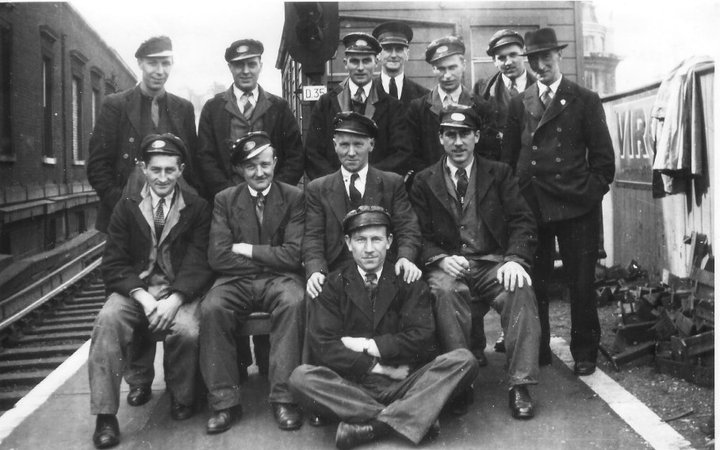
RON FULKNER COLLECTION
Training School after leaving steam to become an electric train driver taken at No.7 platform London Bridge April 1949
Standing back row L ~ R: Chief Traction Inspector H. Hotts & Bob Wheeler.
Standing front row L ~ R: H. Bishop, H. Davis, R. Fulkner (ex Basingstoke, Addiscombe & Farnham) , C. Hopkins & S. Bass (in trilby)
Seated from L ~ R: Sid Nash (Slade’s Green/Dartford), M. Donague, W. Beadle & B. Dreery
Seated with cross legs Mr. Marchant (ex B. Arms)
The Traction Inspector S. Bass (in the trilby hat) never worked on the steam and was one of the first Motorman to be employed at Peckham Rye Electric Depot.
When the L.B.S.C Railway electrified with the overhead wires in 1911. In the early days of electrification a lot of the steam drivers did not want to become motormen owing to the difference in wages, so the railway opened the vacancies to the various traffic grades like Guards and Signalmen and they became Motormen.
Does anybody know any of the Motormen pictured above? I am hoping that there may be a link to Brighton or any of the other Sussex depots.
The only info I have is below curtsey of Steve West (Farnham Branch).
The photo was taken in April 1949 at London Bridge (L.L.) whilst they were on their electric training.
Ron Fulkner (middle row 3rd from left) who started at Basingstoke as a cleaner and then Fireman in 1938. He got his drivers job at Addiscombe in 1949 and then moved to Farnham in the late Fifties.
Peckham Rye E.M.U. maintenance sheds closed in c1965 with the work on the PUL/PAN/COR/BUF and RES units being
transferred to new maintenance sheds at Selhurst Depot. Berthing of units lasted until April 1967 so it is thought that is when
the Motorman's Depot would have closed (this is to be confirmed) and the site was demolished in 1969.
LOCOMOTIVE JOURNAL
October 1957
Page 334
On the Surface
A PAGE FOR MOTORMEN
By D.K. PULLEN
With the Modernisation Plan the talking - point of the day, it might be as well to pause for a moment and take a look back
down through the years to the very beginnings of electrification on the railways of Britain.
The following summary comes from the pen of a Motorman who grew up with electrification - Bert Cooper of Selhurst branch,
over 40 years a Motorman at Streatham Hill depot. Bro. Cooper retired in August and thus severed the last link between
present - day conditions and the good - bad days of the Southern Railway’s “Overhead” system.
(We have indeed much pleasure in publishing Bro. Cooper’s summary and in expressing our deep appreciation of the service
to the branch and society.-Editor)
The history of the electrification of the Southern Railway and its constituent companies dates from the year 1903 when, having
obtaining Parliament powers, the London, Brighton and South Coast Railway instructed its consulting engineer to prepare a
report on the question of conversion of the suburban lines.
This L.B.S.C.R. conversion was on the 6,600-volt, single phase system, partly because of the development of that principle in
the first years of the century and partly because, even at that early date, main line extensions to Brighton and the south coast
were envisaged. Extensions to Crystal Palace from both Victoria and London Bridge were completed before the first war.
Others, to Coulsdon, Sutton, Eastbourne and Brighton, were authorised but due to the war only the Coulsdon and Sutton lines
were converted to single - phase traction - and there not until 1925.
In 1915, the London & South Western Railway began operating over the Kingston roundabout and the Waterloo line via
Putney. The early progress made in the design of low voltage current traction decided the directors to adopt this system.
Extensions were made in 1916 to Shepperton, Hampton Court and Claygate, and after the amalgamation of 1923 direct
current was adopted as the standard for future conversations.
The year 1925 saw the conversion of the lines to Guildford and Dorking, and 1930 that of the Windsor line. 1926 was
memorable for the opening of the first section of the South Eastern & Chatham electrification under the auspices of the
Southern Railway Railway Company. originally this electrification had been planned just after the 1914-18 war to use 1,500
volts D.C. system on suburban lines has been progressive and culminated in opening to electric traction of the two routes to
Sevenoaks. The Sanderstead line and the Nunhead - Lewisham loop were due to be opened to electric traction. The old
L.B.S.C.R. single phase lines were converted to low voltage D.C. in 1929 but some of the overhead masts still exist as signal
gantries.
A notable decision was made in 1930 when electrification to Brighton and West Worthing was begun and turned the Southern
definitely into a believer in the electrification of densely trafficked main and suburban lines. The first stage to Redhill, Reigate
and Three Bridges was opened on July 17th, 1932, and the southern half of the line on January 1st, 1933. Work on the 60 mile
extension to Lewes, Eastbourne and Hastings was begun at the end of 1933 and public electric service was inaugurated on
7th July, 1935, when a total of 444 route and 1,156 track miles was operated electrically by the Southern Railway.
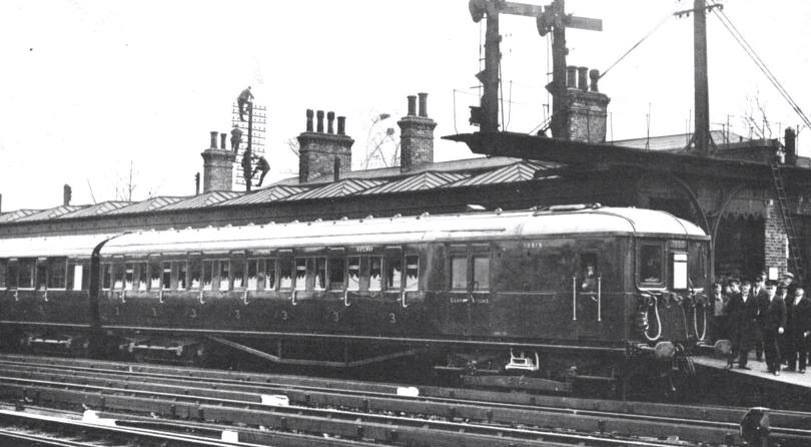
PHOTOGRAPHER UNKNOWN
Above the first electric train arriving at Redhill in July 1932
The decision to electrify the entire main line was taken in 1929, and the section from Coulsdon North to Three Bridges was
opened in July 1932. This is also include the electrifying of the line to Reigate, and subsequently two new motorman's depot
where open at both of these locations. Later on in 1932 another two motorman's depots were opened at Brighton and West
Worthing, in readiness for the completion of the electrification down to Brighton and West Worthing.
THE BRIGHTON BRANCH OF A.S.L.E.&F. WEBSITE.
HAS NOW BEEN MOVED TO A NEW SITE CALLED
IGNITING THE FLAMING OF UNITY
https://ignitingtheflameofunity.yolasite.com/
PLEASE CLICK ON THE IMAGE BELOW
TO TRANSFER TO THIS NEW SITE
CLICK ON THE ABOVE IMAGE TO TAKE YOU
TO THE NEW UPDATED COMBINED AND WEBSITE
IGNITING THE FLAME OF UNITY WEBSITE
https://ignitingtheflameofunity.yolasite.com/
THIS WEBSITE COMBINES THE FOLLOWING WEBSITES
THE BRIGHTON A.S.L.E.&F., THE BRIGHTON MOTIVE POWER DEPOTS
& THE SUSSEX MOTIVE POWER WEBSITES
WHICH EXPLAINS THE EVOLUTION OF THE FOOTPLATE GRADES AND THE
HISTORY OF THEIR TRADE UNIONS AND THE STRUGGLES TO IMPROVE
THEIR WORKING LIVES
CLICK ON THE ABOVE IMAGE TO TAKE YOU
TO THE NEW UPDATED COMBINED AND WEBSITE
IGNITING THE FLAME OF UNITY WEBSITE
https://ignitingtheflameofunity.yolasite.com/
THIS WEBSITE COMBINES THE FOLLOWING WEBSITES
THE BRIGHTON A.S.L.E.&F., THE BRIGHTON MOTIVE POWER DEPOTS
& THE SUSSEX MOTIVE POWER WEBSITES
WHICH EXPLAINS THE EVOLUTION OF THE FOOTPLATE GRADES AND THE
HISTORY OF THEIR TRADE UNIONS AND THE STRUGGLES TO IMPROVE
THEIR WORKING LIVES
